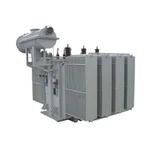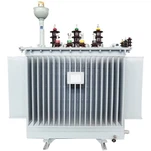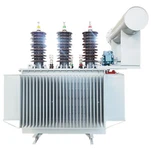Various types of faults can occur in transformer windings. Here are some common winding faults:
Winding Short Circuit:
A winding short circuit occurs when different parts of the winding electrically contact each other, causing a short circuit within the winding. Common causes include insulation aging, mechanical damage, moisture, or overload.
A short circuit fault can cause overheating, severe damage, and even fire in the transformer.
Winding Open Circuit:
A winding open circuit happens when one or more parts of the winding are disconnected or have connection issues, preventing the current from flowing. Common causes include winding wire damage, poor connections, or insulation failure.
An open circuit fault can cause the transformer to stop functioning properly, interrupt the load current, and impact the stability of the power system.
Inter-turn Short Circuit:
An inter-turn short circuit occurs when electrical contact happens between turns within the same layer or between different layers of the winding. It can be caused by insulation failure or electrical stress.
This fault causes abnormal current flow, leading to increased heat generation and energy loss in the transformer.
Winding Ground Fault:
A winding ground fault occurs when part of the winding comes into direct electrical contact with the ground, often due to insulation damage or external factors.
Ground faults can cause the transformer casing to become live, increasing the risk of electric shock, and may trigger the protection device, cutting off the power supply.
Winding Overheating:
Winding overheating occurs when the winding generates excessive heat due to overload, excessive current, or poor heat dissipation.
Overheating can shorten the transformer's service life and may lead to serious fires or equipment failures.
Winding Insulation Damage:
Insulation damage in the transformer winding is a common fault. It can be caused by overheating, moisture, electrical stress, or chemical corrosion.
Insulation failure can lead to short circuits, grounding, or overheating, and is one of the main causes of transformer faults.
Winding Vibration or Loosening:
Long-term mechanical vibrations or improper installation can cause the winding to loosen or shift. This can lead to poor contact, increased losses, or localized short circuits.
Vibration or loosening can also damage the transformer structure, increasing the risk of failure.
Uneven Winding Turns:
Uneven winding turns may result from improper manufacturing or installation. This unevenness can cause localized overheating, increased losses, or unstable electrical performance.
Uneven winding turns can also lead to electrical imbalance, affecting the transformer's load capacity and efficiency.
These faults can lead to reduced transformer efficiency, increased temperature, mechanical damage, or even total failure. Therefore, attention to winding quality and reliability during design, manufacturing, and maintenance is crucial to ensure the transformer operates normally.











